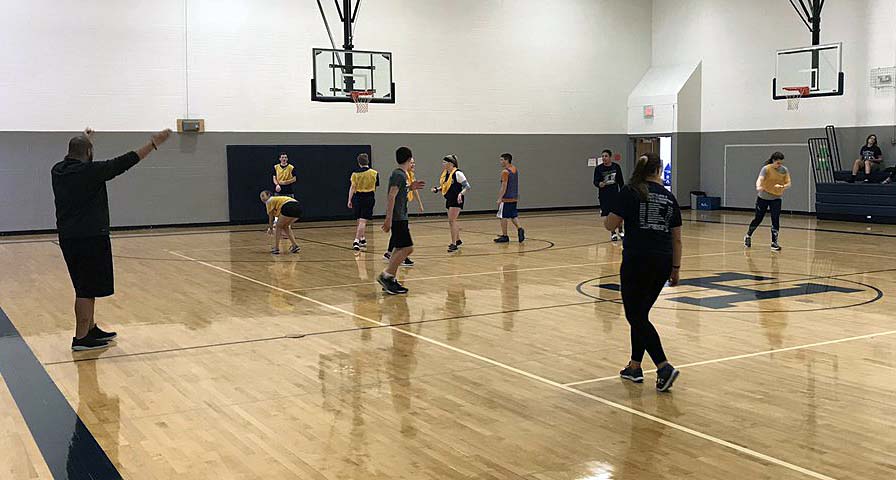California’s Learning Loss Mitigation Fund Makes $5 Billion Available to Local Schools for Programs Including Health, Wellness, and Social-Emotional Learning
A California physical education department chairperson used a portion of the state’s Coronavirus Aid, Relief and Economic Security (CARES) Act funding to add IHT ZONE wrist heart rate monitors to the district’s online PE program.
The PE teacher had added IHT ZONES for high school freshmen and sophomores to use in on-campus PE classes in 2018 and saw a marked improvement in student wellness. When Covid-19 forced schools to close campuses and shift to online learning, she found herself in need of a way to keep students active.
“When the shutdown came, we didn’t have things to get them motivated,” she said. “You can say what you want (to get them motivated), but getting them moving is the main goal.”
Accessing California’s Learning Loss Mitigation Fund
The California Department of Education supplemented its CARES Act allocations with discretionary funding from the governor’s office to create a Learning Loss Mitigation Fund. The fund made more than $5 billion available to local districts for programs that, among several criteria, “support services such as health, counselling, and mental health, as well as programs to address trauma and social-emotional learning, professional development for teachers, and facilitate access to school nutrition programs.”
School districts had until July 15 to apply for the funding and must spend the money before Dec. 31, 2020.
When she learned about the new federal funding her district received, she immediately sought to access the funding to keep students moving. She knew, based on the initial on-campus IHT ZONE use, that students would benefit from having the same technology at home.
“After we initially ordered the IHT monitors (in 2018) and saw a difference in our PE class with improved motivation, this conversation was easy,” she said.
Her application consisted of making her request – 465 IHT ZONE monitors and personal chargers for her freshmen and sophomores to use remotely – and submitting a spreadsheet to the district office.
“That was it,” she said. “They had funding that needed to be used by Dec. 31. Bada-bing, bada-boom.”
Since that Dec. 31, 2020 deadline, more funding has been distributed and allocated from the U.S. Department of Education with spend-by dates of Sept. 30 in 2022, 2023 and 2024.
Focusing on Meaningful Student Activity
Introducing the heart rate monitors in on-campus PE classes produced several key results:
- Students were more motivated to meet goals for minutes of exercise,
- Students were empowered by feedback specific to them and their movement, and
- Teachers received objective information about each student’s effort.
“There is no way to measure a child’s effort,” she said. “That’s subjective – are they working hard or not, how can you really tell? But with this, we know they are working toward their best rate.”
The same factors will exist as students move from on-campus PE to online PE. Now that schools have had time to plan to give students a better online learning experience, the teacher expects students will continue to meet goals, especially when given more freedom to choose their own activities.
“They will be able to do something active every day, whether that’s run, walk, play, shoot baskets or whatever they want,” she said. “I get the data and they get the (daily participation) points and everyone is moving.”
Creating a Connected Online PE Curriculum
Along with the heart rate monitors, the teacher has set up weekly lessons that students must complete. They’ll have daily check-ins and a syllabus to work from that includes complete with daily goals to meet. The district’s online PE curriculum will be much more robust than what they were forced to use in March.
“This will be much better,” she said. “With the incentive of the heart rate monitor, they must use it and it’s a daily assignment. They have to be active for at least 20 minutes a day, and I want to see that they are working. They have to get into the yellow zone.”
The heart rate monitor’s yellow zone indicates the student heart rate is between 60-80% of their max heart rate. The IHT ZONE also shows students blue (resting, below 60% of MHR) and red (vigorous, between 80-90% of MHR).
“When kids are wearing the heart rate monitors, they know what they need to do,” she said. “It’s not teacher-centered. They do it on their own.”
And see the results. One student embraced the technology to get more active in the 2019-20 school year.
“She has always been a heavy student,” the coordinator recalled. “I explained that she didn’t have to run to get healthy, she just has to get moving. In January, she really started working. She walked every day. It didn’t take long before we could really see a difference.”
As she became more active, she felt better, and the cycle continued. Even as schools went online for the remainder of the year, the student stayed connected with her teacher into the summer.
“She looks and feels great and it is so much fun to talk with her,” the teacher said. “We connect over the computer now and she lets me know that she’s still walking every day and staying active. She hated PE and was insecure about her body. Now, she is seeing definite progress.”
Progress that the teacher expects to see with a new group of students as they focus on their fitness from home.
Note: The teacher’s name and school are omitted by request. Teachers and PE Department Leaders should check with their local funding departments to see if districts applied for Learning Loss Mitigation Funding from their state education agency.



